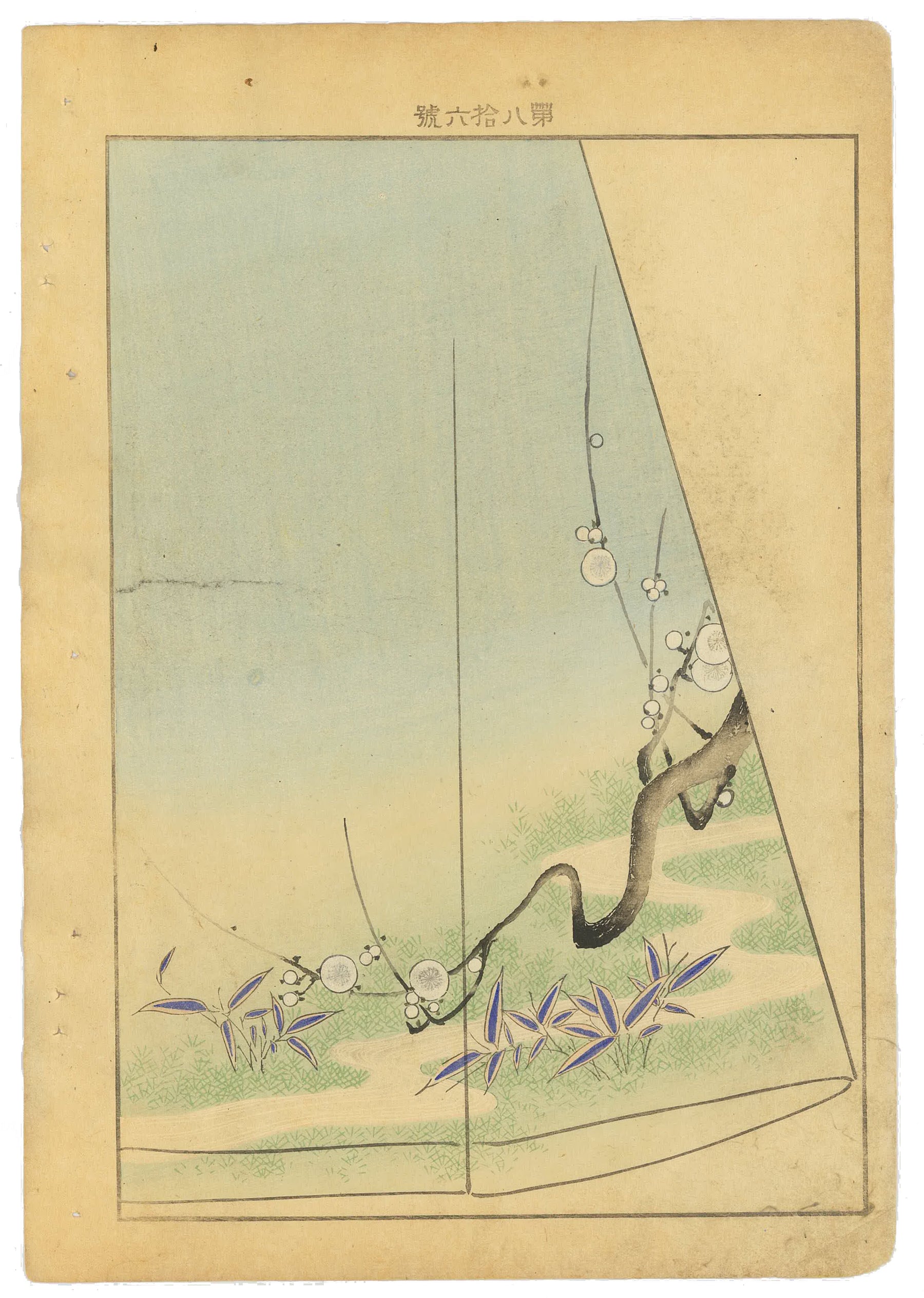
The Plum Blossom

Plum Blossom by a Stream, Koju Yamashita, Hanakata Pattern Album, c. 1899.
Originating from China, the ume (梅), or plum blossom, made its way to Japan and seamlessly integrated into the country's artistic and cultural landscape over centuries. Initially a foreign motif, it evolved to become quintessentially Japanese, adorning various mediums such as paintings, prints, and textiles. This transition reflects a broader narrative of cultural exchange between Japan and China.

Plum Blossoms at Night, Utagawa Kuniyoshi, c. 1843-1847.
In aristocratic circles, plum blossom designs were often depicted with elegance and refinement, reflecting the wearer's status and sophistication. In more popular contexts, the designs could be bolder and more stylised, reflecting individual tastes and preferences.
Traditional techniques such as yuzen (友禅) dyeing and embroidery brought the plum motif to life on kimonos, enhancing its aesthetic and symbolic appeal. In modern times, the plum motif continues to thrive, blending traditional symbolism with contemporary design elements, showcasing its timeless appeal and adaptability.
In essence, the plum blossom remains a cherished element in Japanese culture, celebrating not only beauty, but the renewal of life and nature as a symbol for the arrival of spring or the New Year. Its enduring presence in art and fashion bridges past and present, tradition and modernity, embodying the essence of Japanese aesthetic and cultural values.

